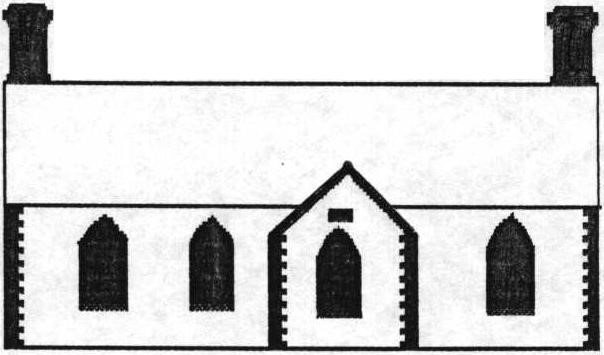|
|
Key Stage 1
|
Lower Key Stage 2
|
Upper Key Stage 2
|
|
Drawing
|
- Using images and symbols to name and describe feelings and ideas;
- Representing familiar objects as a ‘schema’ by combining shapes;
- Drawing confidently from imagination;
- Combine schematic and observational approaches;
- Add detail to artwork;
- Observing and recording the shapes, patterns and textures found in objects;
- Working in a combined schematic and observational way with confidence in placing objects;
- Using drawing as the starting point for work in other media as well as in its own right.
|
- Representing objects with correct proportions;
- Observing how shape, colour and tone can be used to describe form;
- Using observational drawings as opening studies for more developed work;
- Using line, tone and texture to represent objects in three dimensions;
- Spending longer periods of time on more challenging activities, concentrating on particular views of objects;
- Using tools, such as viewing frames, effectively;
- Using drawing as part of the investigation process and presenting work well in a sketchbook.
|
- Depicting shadows and reflections using light and shade;
- Combining different pressures and shading techniques;
- Developing a personal style;
- Choosing appropriate techniques to convey meaning or atmosphere.
|
|
Painting
|
- Exploring the tactile and visual qualities of a paintbrush;
- Combining materials and tools and enjoy finding out how to achieve different effects;
- Mixing paints from a limited range;
- Showing control in the use of colour;
- Understanding that paint is used in different ways for different effects;
- With guidance, adding detail to work.
|
- Working in stages using different materials for particular effects;
- Making some independent decisions about colour;
- Beginning to understand and identify complementary colours and warm and cool colours;
- Speaking about the emotional impact of colour;
- Developing painting skills as parts of work that include initial studies and investigation;
- Controlling brushes and materials with confidence;
- Adopting a systematic approach when mixing and applying colour;
- Using a good vocabulary of art terms related to colour concepts such as opacity and transparency.
|
- Include texture gained through paint mix or brush technique;
- Show well-developed control is to achieve effects;
- Mix appropriate colours to create a suitable colour palette that conveys mood and atmosphere.
|
|
Sculpture
|
- Exploring materials;
- Joining simple objects together;
- Using a range of modelling materials squeezing, pinching and rolling them to make familiar or fantasy objects;
- Adding colour, pattern and texture to objects;
- Working on a larger scale when appropriate;
- Showing sufficient control to join and manipulate materials for the purpose intended;
- Showing a developing understanding of the qualities of the materials used.
|
- Taking part in extended activities through different stages;
- Working independently with a wider range of materials;
- Requiring less support when selecting materials and tools;
- Using a similar range of materials as at earlier levels but with an increased sensitivity and control;
- Using more advanced materials like wire and plaster.
|
- Portraiture work has a life like quality gained by choosing and applying the most appropriate techniques;
- Making models on a range of scales that communicate observations from the real or natural world;
- Producing sculptures that are well proportioned.
|
|
Materials and textiles
|
- Sorting, matching and naming different materials;
- Exploring materials to see how they are made;
- Using joining processes such as tying and gluing;
- Weaving on simple frames for different effects;
- Using paints, dyes, crayons and other media to make individual and group designs on textiles;
- Joining, positioning and manipulating materials with some independence.
|
- Developing more control over the making process;
- Collecting materials and ideas for work and experiment with materials before using them;
- Using more advanced printing and dyeing techniques, combining different processes;
- Following a clear design brief to achieve an effect in techniques such as sewing (cross stitch & backstitch) appliqué, embroidery, plaiting and finger knitting.
|
- Displaying precision in work;
- Combining a range of sewing printing, dyeing and joining techniques to good effect.
|
|
Printing
|
- Using objects and basic tools and equipment to make patterns and images;
- Working with a range of processes, controlling materials and tools;
- Using printing to illustrate and explore ideas, commenting on what is done.
|
- Approaching work in stages to use simple processes to make more complex designs;
- Developing work from initial studies and investigations;
- Understanding how printing differs from other art processes and how it is used in different cultures;
- Using a number of colours built up in a sequence;
- Using precise repeating patterns by creating accurate printing blocks.
|
- Choosing the appropriate materials on which to print to suit the purpose;
- Using drawings and designs to bring fine detail into their work;
- Combining printing techniques within one piece of work to create impact and effect.
|
|
Collage
|
- Using cut and torn papers and other materials to make simple patterns and images;
- Recognising that materials look and feel different, choosing the most suitable materials for an effect;
- Mixing paper and other materials with different textures and appearances.
|
- Using collage to explore wider art themes;
- Returning to work using a range of techniques to develop the final image;
- Experimenting with techniques that use contrasting textures, colours or patterns (rough/smooth, light/dark, plain/patterned);
- Experimenting with ceramic mosaic techniques to produce a piece of art.
|
- Choosing the most appropriate materials to fit the purpose;
- Conveying a definite theme that is apparent to any viewer.
|
